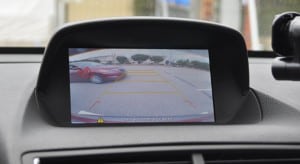 While you are out shopping AAA warns drivers to avoid a common parking lot mistake. According to a new survey, more than three quarters (76 percent) of U.S. drivers most frequently park their vehicle by pulling forward into a parking spot, rather than backing in, a riskier practice that driving experts warn leaves pedestrians more vulnerable when a driver later reverses from the spot and into the traffic lane.
While you are out shopping AAA warns drivers to avoid a common parking lot mistake. According to a new survey, more than three quarters (76 percent) of U.S. drivers most frequently park their vehicle by pulling forward into a parking spot, rather than backing in, a riskier practice that driving experts warn leaves pedestrians more vulnerable when a driver later reverses from the spot and into the traffic lane.
Although rear cross traffic alerts seem to be a great idea for backing out of spaces, studies show the feature doesn’t work as well as hoped especially when signals and views are blocked by large vehicles on either side of the car with these types of systems.
The Automobile Club of Southern California’s Automotive Research Center, AAA tested rear cross traffic alert systems, when parked between large vehicles the tested systems failed to detect pedestrians, bicyclists, motorcycles and other vehicles:
- A passing motorcycle was not detected by the systems in 48 percent of tests.
- The systems failed to detect a bicycle passing behind the vehicle 40 percent of the time.
- The systems failed to detect a passing vehicle 30 percent of the time.
- While not all systems are designed to detect pedestrians, the technology failed to detect pedestrians 60 percent of the time.
AAA asserts that it is critical that drivers reverse slowly and use this technology as an aid to, not a substitute for, safe driving.”
Previous AAA testing of rear-view camera systems, required on all new vehicles by 2018, revealed significant consumer benefits including increased visibility of the rear blind zone by an average of 46 percent. However, it’s important to note that no system shows 100 percent of the space behind a vehicle and that rain, snow or slush can impede camera visibility.
AAA recommends that drivers reverse into parking spaces whenever possible, except where prohibited by law or parking lot restrictions. When faced with angled parking, drivers should follow the flow of traffic and pull forward into the parking space.